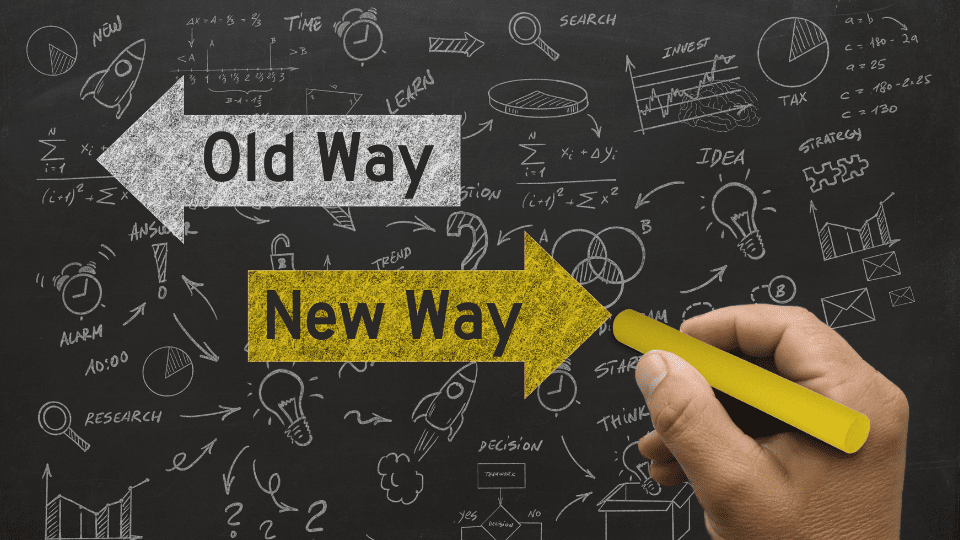By: Catherine Saar
Why is change so difficult? Whenever we ask our clients to tell us how they react to change, their answers typically include more anxiety and concern than excitement and hope. Even a “good” change, like getting a promotion or moving to a lovely new home, can cause stress and anxiety, partly because when we make any kind of change, we cannot be fully sure of how our circumstances will be impacted.
As great change leaders, a big part of our job is to help allay the fears of those we are asking to change. Clear, consistent communication must be at the heart of our approach, along with a well-considered plan that addresses project design, people development, clear delegation of the right tasks to the right people, and a coordinated effort to get it all done.

At Integrated Work, we call this the 4D Model of Change Leadership: Design, Develop, Delegate, and Do. Missing any of these four elements, and not paying enough attention to how and what you communicate, and to whom, can stop project adoption in its tracks.

Step one: Define your North Star. What are you designing and why? What is the purpose of the change, and how will you get there? As a human, I always want to know what and why before I consider committing to almost anything. Setting a vision and sharing purpose is the first step to creating awareness. If stakeholders aren’t aware of where you are going, how can you expect them to get on board your change train?
And who makes change happen? It’s individuals! As change leaders, we are called to invest energy into the folks who will make things happen. Even though most of us can get behind an organizational imperative, if we’re being honest, we will be concerned about how we will be impacted. It’s no different for those who will be involved in your change initiative. As a change leader, an important question to ask yourself is, which stakeholders will be directly (and indirectly) impacted by a change effort, and what will motivate them to engage? Data and logic alone are typically not enough to motivate stakeholders. We must also engage their hearts. To do that, consider, what’s in it for them if they embrace the new order of things? Will it make their job easier, free up resources, or open up new growth opportunities? Conversely, are they afraid that they will lose power, control, or a feeling of competence with what they are doing? Whatever it is, as a great change leader, it is helpful to be willing to understand the perspective of those who will be impacted so that you can communicate with them in a way that can help them to feel more comfortable – or at least help them to feel that they are understood. To do that requires dialogue: two-way conversations with constituents and listening as well as responding to their needs and concerns.

Once the conversation is flowing and communication is happening, the savvy change leader also realizes the importance of developing stakeholders so they feel ready and able to do the work they will be asked to do. A person who is being asked to change not only needs knowledge of what must be done but also the skill to do the work. For example, I might know the rules of baseball, but do I have the ability to hit or catch the ball when I get into the game? That’s where training, development, and coaching come in. Giving the right support to those who are part of a change initiative can help get them to get excited about the positive aspects of the work, and may address some of the apprehension they feel about new processes, procedures, and responsibilities.

Once the team is aware, understands the what and the why of what’s to come, and is trained sufficiently to get the work done, then the great change leader must be ready to implement accountabilities, roles, and timelines. Who is doing what? How will the interactions occur? How will work be delegated and measured? What kinds of feedback loops can be put in place to assess what is working well and what might need to be adjusted? This is part of the “delegate” and the “do” phase.

Last but not least, instituting ways to reinforce the changed behavior will help to assure that it is sustained. Until the change is not considered a change but becomes routine, it must be kept top of mind. Unfortunately, reinforcement of change behavior while essential is often overlooked. Measurement, (“what gets measured gets done”) peer support and/or friendly competition, reporting aligned with compensation, and recognition are just a few examples of how change can be maintained.
Change is hard, and to do it right requires a well-thought-out trajectory that includes relationship building, storytelling, two-way dialogue, and a solid plan all the way through the 4-D change leadership process. It would be great to just tell people what to do and hope that they will do it. But in my experience, that just doesn’t work very well for creating long-lasting change. I’d love to hear, what’s been working for you?
